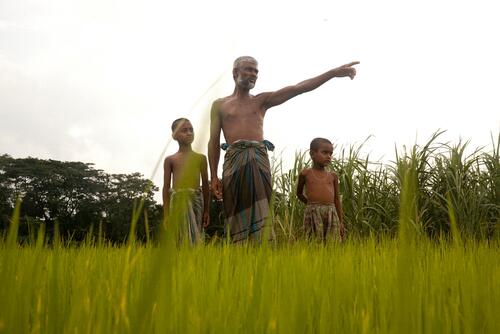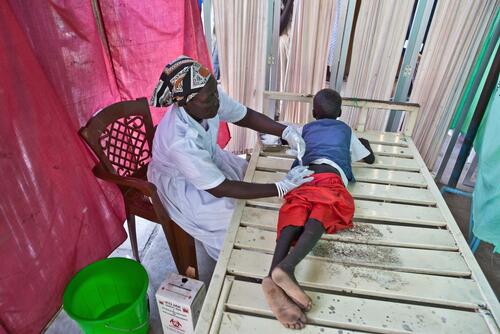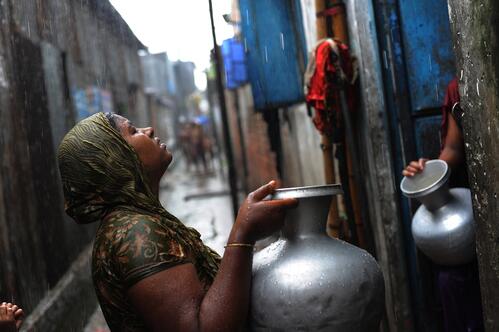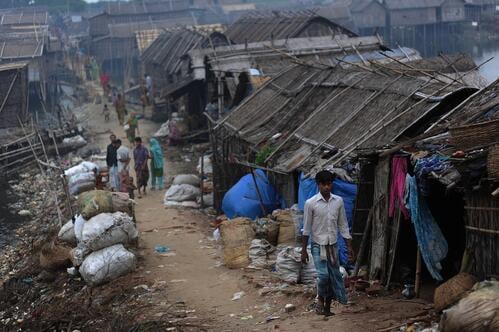Fulbaria Bangladesh — Today, a new medical programme bringing hope to thousands of kala azar sufferers in Bangladesh is being launched by humanitarian medical aid organisation Médecins Sans Frontières (MSF) in partnership with the Ministry of Health (MoH), Bangladesh.
The joint initiative between the Government and MSF will bring free lifesaving treatment to over 3000 people suffering from the deadly disease in the Fulbaria upazila of Bangladesh over the next two years, explains Head of Mission for MSF in Bangladesh, Paul Critchley.
“Kala azar is deadly if untreated. Early diagnosis and effective treatment can save many lives. MSF is working closely with the MoH to develop new and innovative ways to tackle the disease, allowing patients to recover faster and carry on with their daily lives,” said Critchley.
Kala azar is a neglected disease found largely in parts of Asia and Africa. After malaria, it is the second biggest parasitic killer in the world causing over 50,000 deaths every year. According to the World Health Organisation, approximately 200 million people in South Asia are at risk from the disease. Of the estimated 500,000 people in the world infected each year, many are thought to live in Bangladesh, Nepal, and India. The disease is now being reported in 45 districts in Bangladesh. The upazilas of Trishal and Fulbaria, within the district of Mymensingh, have 60% of all cases in the country according to the MoH.

Kala azar, formally known as visceral leishmaniasis, is caused by parasitic protozoa leishmania donovani, transmitted to humans by the bite of an infected female sandfly, phlebotomus argentipes. It affects the immune system, giving rise to secondary infections such as pneumonia, diarrhoea, and tuberculosis, causing persistent fever, anaemia, weight loss, and if left untreated, it kills.
The sandflies thrive in cracks and crevices of mud plastered houses, heaps of cow dung, rat burrows, bushes and vegetation around the houses. The Ministry of Health is planning to conduct vector control activities to control the sandflies as part of a two-pronged attack with MSF, explains Dr. Anjuman Ara, an MSF doctor working at the centre.
“At the same time, MSF is adopting an integrated programme comprising of ‘active case finding’ within the community to identify patients with the disease, followed by treatment with AmBisome, an effective drug included in the national kala azar protocol, but yet to be used in Bangladesh”, she said.
“With AmBisome, we can now treat a patient in 5 days with 3 infusions, whereas the previous treatment SSG (Sodium Stibo Gluconate) required 30 days of painful intramuscular injections, with possible toxic side effects. This hugely reduces the amount of time a patient has to spend in hospital” she added.
Health ministers from Nepal, India and Bangladesh, where the disease is endemic, signed a Memorandum of Understanding in May 2005, pledging to collaborate to eliminate kala azar from the region by 2015 in line with the Millennium Development Goals.
“The joint effort of MSF and the MoH to tackle kala azar is already saving lives. The centre is currently treating 130 patients for the disease. The positive impact is not limited to the patients we treat today, but contributes toward protecting people from the disease in the future”, said Mr. Critchley.
MSF has been providing healthcare in Bangladesh since 1992. Currently, as well as kala azar treatment programme in Fulbaria Upazila, MSF provides basic healthcare programmes in Kutupalong and the Chittagong Hill Tracts. MSF also assisted tens of thousands of people affected by Cyclone Aila, which struck Bangladesh in late May 2009.






